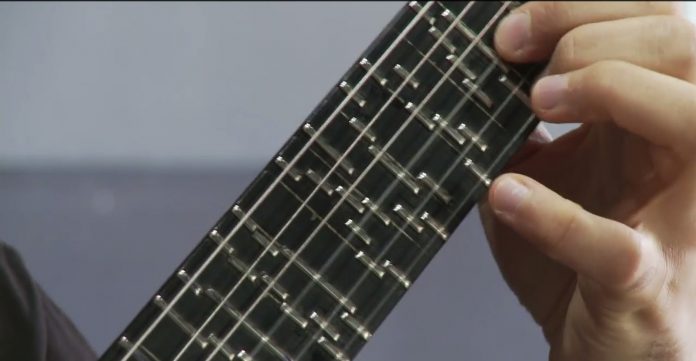The Adjustable Microtonal Guitar was designed by Tolgahan Çoğulu in 2008. It was accepted and funded as a scientific research project at Istanbul Technical University Dr. Erol Uçer Center for Advanced Studies in Music under the supervision of Prof. Şehvar Beşiroğlu. The first prototype was made by Ekrem Özkarpat. The new versions have been made by Briken Aliu since 2014.
In designing Adjustable Microtonal Guitar, Tolgahan Çoğulu was inspired by René Lacote’s and Walter Vogt’s guitars. In the Adjustable Microtonal Guitar, all the frets on the fretboard are movable in the channels under each string. Besides, any number of frets can be inserted into or removed from the fretboard.
In the equal temperament system used in Western classical music, the octave is divided into 12 half tones. On conventional guitar fretboards, the frets are half tone apart. Similarly, piano keys are also a half step apart. In Western classical music theory, the term microtone is used for an interval less than a half tone. Microtonal Music refers to pieces that use microtones in contemporary Western classical music repertoire. For example, Mexican composer Julian Carrillo divided the octave into 96 tones orAlois Haba into 24 pieces.
In addition to this, the term Microtonal Music also encompasses music that use intervals other than the equally-tempered 12 notes of an octave. For example, pieces written in Pythagorean, just intonation ormeantone temperament are also categorized under microtonal music.
In Ottoman/Turkish music theory, which is based on maqams, microtones are referred to as koma. In this system, a whole-tone is divided into 9 equal parts, and each part is called a koma according to Arel-Ezgi theory. For an alternative theory, you can read Ozan Yarman’s PhD.







